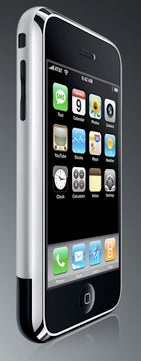Reporter’s Notebook: We’ve all heard by now about the iPhone being hacked so it can be used by other telecom carriers instead of AT&T. That exercise, by a number of groups, was hardly trivial, but neither is finding out something as seemingly simple as the parts that make up the device.
“Every time we tear apart an Apple device someone gets hurt,” said Andrew Rassweiler, principal analyst and teardown specialist at iSuppli. Rassweiler was a keynote speaker at the EDA Tech Forum earlier this week in Silicon Valley.
Often used for competitive analysis, iSuppli’s reports can be controversial because the company often has to make a series of educated guesstimates about what it cost to build a device or system. One of the issues is that component names often aren’t identified and it’s sometimes just plain difficult to see what’s what.
 |
Holder of secrets. Source: Apple |
Rassweiler said he thinks Apple did everything it could to stop would-be cloners, much less companies like iSuppli, from finding out what’s inside the iPhone. For some devices, like the iPhone and the iPod series, iSuppli employs another company to expertly apply acid to get at components. “Sometimes even that doesn’t work,” said Rassweiler. “The new Nano has us stymied.” Even with precision application, he said the acid ate into part of the processor and damaged other parts iSuppli tried to examine.
The iPhone presented several challenges starting with the touch screen. Rassweiler said iSuppli has taken apart a hundred different handsets for analysis since 2005 but hadn’t seen anything like the iPhone’s touch screen technology. And getting at it was no cakewalk.
There are actually three layers of glass in the iPhone, Rasssweiler explained, a protective top layer, an inner layer with the touch circuitry and a third layer for the LCD
He thinks we’ll be seeing more phone makers use glass because it is more scratch resistant than polycarbonate.
As for iSuppli’s analysis, as soon as the iPhone was released June 29, iSuppli bought three of them. A team of analysts spent four days picking them apart leading to its Bill of Materials (BOM) estimate of about $220. The touch screen ($51.50 by iSuppli’s estimate) was among the most expensive components. Of course these estimates don’t include things like development costs and marketing.
Also, the BOM is far from a recipe for building an iPhone or iPhone clone. For one thing, many of the smaller components aren’t identified and Rassweiler admits they couldn’t figure out who makes them. “Apple uses private label, integrated circuits,” he said.
While again, this probably helps keep the design a secret from competitors, Rassweiler says he’s sure some of the suppliers would like to get more credit. At last month’s launch of new iMacs, Steve Jobs was asked why the computers don’t feature the same Intel labeling all the major PC makers use. “We like our own stickers better,” he quipped. Then he claimed the stickers were “redundant” since “everyone knows we use Intel.”
iPhone killers in waiting?
Getting back to the component issue, Rasssweiler doesn’t think there is anything special about the parts Apple’s assembled for the iPhone. “With Apple … the whole is greater than the sum of the parts. Apple is one of the few American companies that inspire design.” He said the way the iPhone is put together is far from out of the reach of other handset makers. “The design aesthetic is key to Apple.”
Certainly Apple has competition. It recently made a steep $200 price cut on the iPhone to try and keep the sales momentum going. Rasssweiler said iSuppli is in the midst of a report comparing four would-be “iPhone killers”: the HTC Touch, Sony-Ericsson W950i, LG KS20 and the Nokia N95.
But while they all have their plusses, Rasssweiler admits he’s already concluded there are no iPhone killers in the bunch.
“They all fall short in one way or another,” he told InternetNews.com. “Either the mass storage is lacking, or the touch screen, or just the overall aesthetic. The iPhone’s X factor is form and function.”
David Needle is West Coast bureau chief of InternetNews.com.


